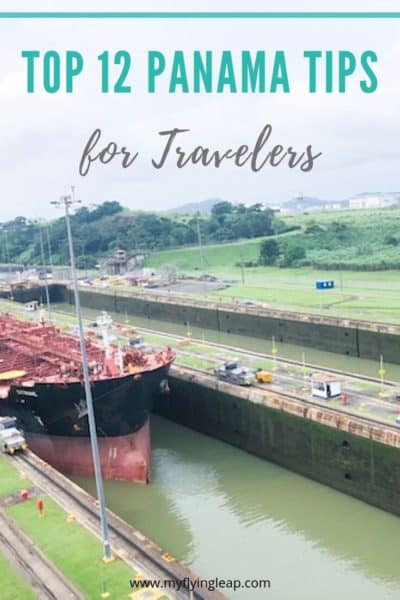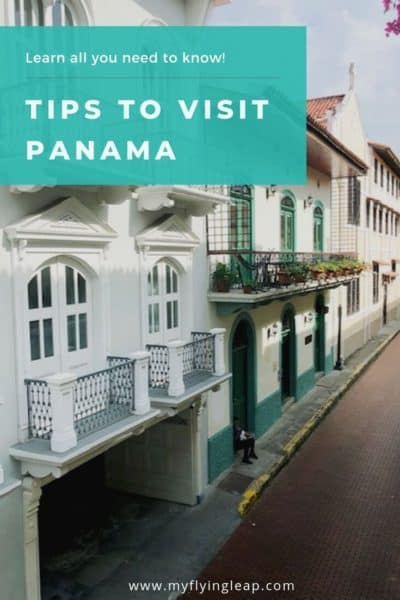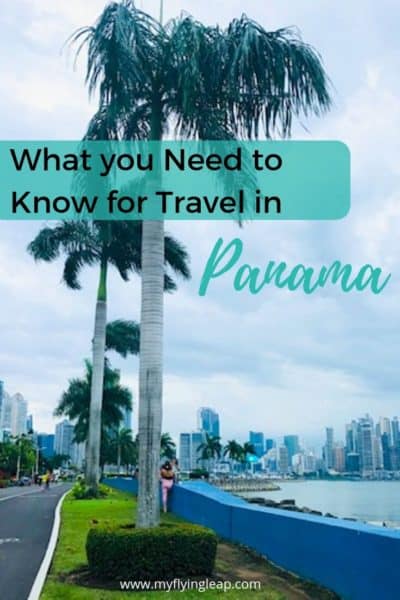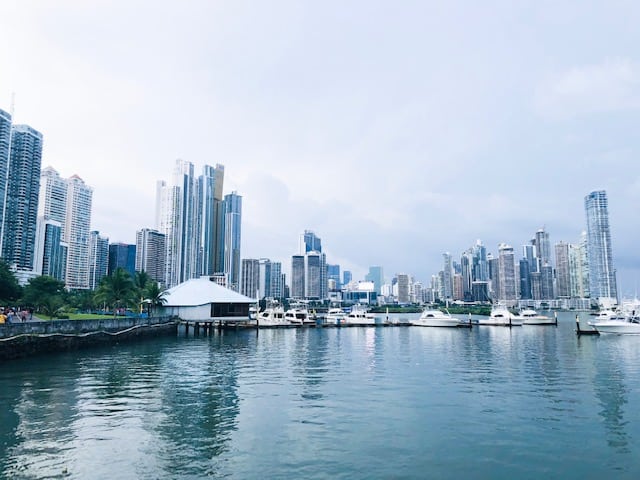Panama Travel Tips – 12 Things to Know Before You Go
Plannning a trip to Panama and looking for the best Panama travel tips before you go?
Panama is an amazing country to visit, and there is a lot to see and do. It’s located in the center of the area between North and South America, and while it’s not as popular for tourists as nearby Costa Rica, it’s an incredible place to visit.
I had the opportunity to take a friend who hasn’t traveled internationally a lot, and it was such a great experience. During the trip, we talked about some of the things we noticed and what would help others plan for a Panama trip, so I thought I’d share them with you! These Panama travel tips will help new travelers and experienced travelers alike.
Read on to learn the best Panama tips for travelers and what to expect when you visit.
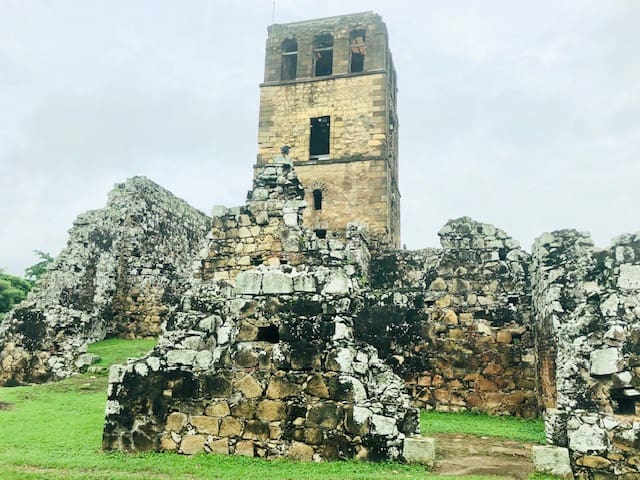
This post may contain affiliate links, which means I’ll receive a commission if you purchase through my links at no extra cost to you. Please read the full disclosure for more information.
Helpful Panama Travel Tips for Any Traveler
The following Panama tips will be really helpful when you plan and pack for your trip. They will also help you have a really great time when visiting Panama City, so check them out.
1. Understand the Currency
The local Panamanian currency is the Balboa, but people also use the United States Dollar (USD). The Balboa and USD are a 1:1 exchange, so the money is seen as interchangeable. Sometimes, you will get change in Balboa, and sometimes, you will get it in U.S. dollars.
You can certainly convert your U.S. dollars to Balboa, but why would you? Just pay in whatever you have, but remember, it’s a good idea to use the Balboa first unless you want to go home with them.
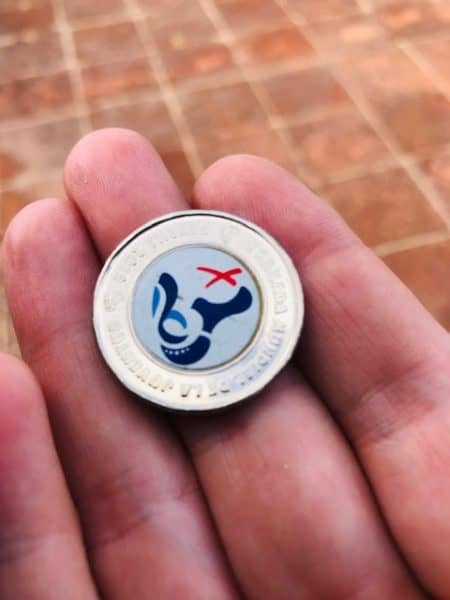
2. Pack a Light Sweater
It is generally hot and humid in Panama all year round. However, restaurants and stores in Panama City like to blast the air conditioning, and it can get quite cold. We both brought a light wrap or a sweatshirt and made good use of them.
Don’t forget to pack a sweater or a jacket when you go, and make sure to bring it with you. You’ll probably need it for indoor activities like visiting museums and dining.
3. Remember to Bring Bug Spray
Lots of it. As much as you can carry! This should probably be #1 of the Panama tips on this list, and it’s so very important. Mosquitos are a huge issue in Panama, and they have a slew of other bugs to contend with as well.
The two types of mosquitos found locally carry all sorts of diseases like malaria, yellow fever, Dengue, Zika virus, and Chikungunya. None of them sound like fun. Make sure you’re protected, especially at night and when you’re in or around the rainforest.
It’s a good idea to take malaria prophylactic like Malarone or Doxycycline. Also, spray your clothes with permethrin before you go. You need to really soak down your clothes well, so it’s a good idea to buy a couple of bottles.
While traveling, you have a few options for protecting your skin as well. You can use bug spray with DEET, or there are some good natural bug repellants with essential oils like lemongrass and citronella that work well.
I used picaridin and found it was very effective, along with spraying my clothes with permethrin.
4. Pack Lots of Wicking Clothing
Panama tends to be very humid. Especially during the rainy season, it is especially rainy and humid. Humidity is dancing at around 100%, and you get caught in daily, and sometimes several times daily, rain showers.
Bring wicking clothing that will dry quickly, as you are almost guaranteed to get wet. REI is a great place to find what you are looking for both for men and women. Don’t forget your underwear as well, and consider bringing wool socks too.
And, if you have hair like me, bring lots of hair ties and plan to leave your hair appliances at home. There’s no point trying to style or straighten your hair in 100% humidity.
5. Don’t Feed the Monkeys
It might be tempting to bring fruit when you go hiking in the rainforest or go on a cruise on Gatun Lake to see the monkeys, but feeding them is not eco-friendly and is not good for them. They get used to the food people provide and become dependent on it.
I’ll admit that I had read to bring bananas, and I did on our boat tour of Gatun Lake, but I decided to keep them in my bag. Hurting the environment is not my thing, even to see monkeys.
And for that matter, don’t feed any animals that you see in the wild. It’s just not a good idea in Panama, or wherever you go.
6. Don’t Flush Paper
In Panama, they often don’t flush toilet paper down the toilet. The little trash bin they have next to every toilet is there for a reason, and you should use it.
Most businesses have septic systems and flushing any materials down the toilet will mean more regularly cleaning the tanks out. So, when you make the decision to put the paper you use in the bin, you are helping to support that local business.
This is typical in most Latin American countries and a good practice to support.
It should go without saying that if you’re not flushing paper, you shouldn’t be flushing anything else, either.
7. Leave the Power Adapter at Home
If you are from Canada or the United States, you don’t need to bring a power adapter or converter. Yay!
It’s a good idea to always check whether you need a power adapter when you travel. You may also need a converter with some electric items. But it’s so nice not to need them!
For those in other countries, Panama uses adapters A and B, and their voltage is 110 V.
8. Take Uber
I have been to many other large cities, larger than Panama City, but this city boasts some of the most aggressive and crazy driving I have ever seen. I highly recommend leaving it to the experts unless you are a major adrenaline junkie. In which case, have at it and have fun.
Otherwise, take Uber for your local trips. Ubers are cheap—my most expensive Uber ride was $23 USD, but when we were moving about in Panama City, it generally ranged from $2.50 USD to $10 USD.
Taxis are available. However, I prefer Uber for a number of reasons. Most importantly, Uber is usually a safe experience as there are background checks done on drivers, and you have the added security of getting the person’s name, car make and color, and license plate number so you can be sure it’s the person you expect.
Uber tends to be a lot cheaper than taxis as well, and they are hassle-free as you pay through the app, so you know the price upfront and don’t need to pass money or negotiate.
9. Bring a Good Raincoat
With the juicy levels of humidity comes lots of rain in Panama. The rainforest didn’t get so lush without lots of the wet stuff! Even in the dry season, there’s a good bit of rain, but it is especially so in the rainy season.
The rainy season is no joke there. I visited Panama during the rainy season, and it rained every single day we were there. And when it rained, it rained hard, though thankfully, it didn’t usually last more than an hour or two.
Once, I was on a boat on Gatun Lake, and it was horizontally raining. It caught us off-guard and started before we had time to put our raincoats on. Then it traveled right inside them, right up the sleeves and the bottom of the raincoat.
Bring a raincoat with ties around the bottom and the sleeves if you can. I brought a raincoat similar to this by North Face but didn’t take full advantage of it, clearly!
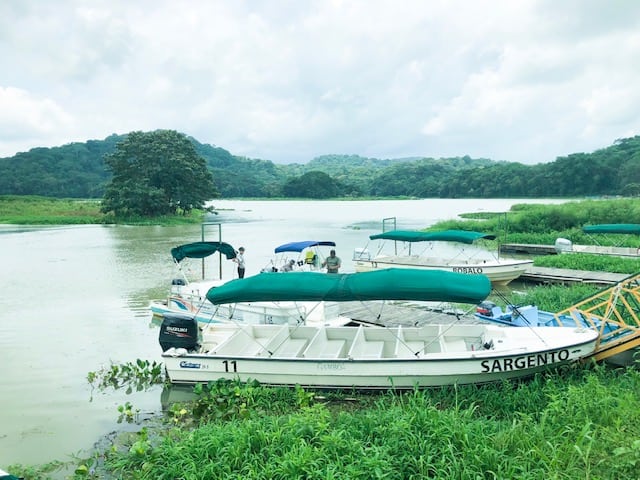
10. Be Careful Drinking the Water
Though the Centers for Disease Control and Prevention (CDC) in the United States says you can drink the water in Panama, they do caution that you should get vaccinated for both Typhoid and Hepatitis A. Both of these can be from contaminated water.
I usually filter my water anywhere south of the United States as it can contain microorganisms that my body isn’t accustomed to. I did so in Panama as well.
This filter is my go-to now because it collapses to the size of the filter. It’s small and fits in most bags, and can even be used to fill other bottles during a trip.
At a minimum, you should either drink filtered or bottled water in Bocas del Toro (near Costa Rica) and Guna Yala (the San Blas Islands).
11. Be Prepared for a Second Airport Screening
We were surprised to learn that there was a second full screening for flights going to the United States at the Panama airport. It is done at the gate, so drink up your water before you head to the gate or be prepared to dump it.
We had to remove laptops, toiletries, and shoes a second time, and this included all electronics, including iPads and phones.
The area where we were held didn’t have enough seating, so half of the people had to stand, and it was quite warm and crowded. It wasn’t a pleasant experience, and especially so as we weren’t prepared for it (travel planning fail, I suppose)! It didn’t help that our flight out was an hour late, so we were stuck in this area for a while.
I’m not sure if this is a regular occurrence, but it seemed to be when I went. So, just in case, be prepared.
12. Bring Cash
Not all places take credit cards in Panama. Like with much of Latin America, in my experience, maybe half or fewer places take credit cards. This is especially so with shops, restaurants, and small stores. Make sure you have cash or at least access to cash with an ATM card.
The San Blas Islands have no ATMs as well, so you must bring cash with you if you visit the islands and want to purchase anything. And make sure to bring some small bills as they may not be able to make change for you!
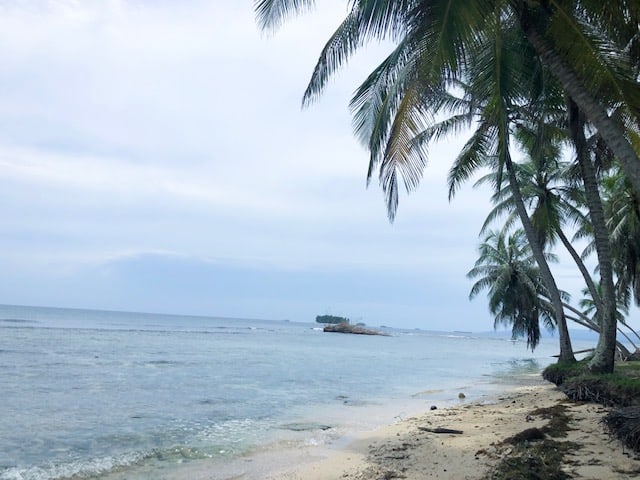
13. Learn Some Spanish
Most people in Panama speak Spanish. And while you may find more people in Panama City who speak English, not everyone does. Less do in the smaller towns.
It’s a good idea when you travel to Panama, or to any non-English-speaking country, for that matter, to learn some Spanish. Knowing a little is the best way to help you overcome a language barrier.
It also shows respect and interest for the local people. And, it’s a great way to get to know people when you travel.
14. Panama Safety
You might be asking if traveling to Panama is safe? The answer overall as to whether Panama is safe is yes, it is.
Whenever you travel anywhere, it’s important to take some general safety precautions. Be careful with your money and your belongings, and keep your hands on them, or them in your sight at all times.
You can prepare for safe travels before you go, and take care when you’re traveling to have a great time in Panama. This post includes some solo safety tips that are great whether you travel solo or not.
Panama City is such a great place to visit, and these tips will help you to have an amazing visit while you’re there. Use these Panama travel tips to help you plan for your trip and enjoy!
You Might Also Like
- Top 15 Things to Do in Panama City
- Why You Should Visit the Panama Canal
- Visit the Historic Town of Portobelo
- San Blas: Visit the Best Panama Islands
- Why You Should Visit Panama City, the Old and the New
Like it? Pin it!
